
Get Involved
“How Can I Make a Difference?”
Easterseals was founded in 1919 with the mission to provide opportunities for those living with disabilities and special needs – and we continue that mission today – but we cannot do it without YOU. Without your support, we are unable to continue to provide these vital services to the community. If you’re looking to make a difference, take a look below and see how we can work together to provide life-changing services to those that need it most. Through your involvement, participation, and support of Easterseals, you can change lives and make the world a better place for everyone.
YOU Can Make All the Difference!
Take a look at the list below and find the best way for you to get involved with Easterseals today:
November is National Family Caregiver's Awareness Month
Last updated: November 4, 2022
Get Involved
Our blog
-
MLB Players With Disabilities Conquered the Big Leagues | EastersealsNJ
Thursday, April 6, 2023, 3:38 PMMLB Players With Disabilities Conquered the Big Leagues | EastersealsNJ
Thursday, April 6, 2023, 3:38 PM
March 30th marked the opening day of Major League Baseball. So that’s right… Baseball is…
Read this Post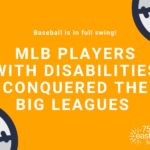
March 30th marked the opening day of Major League Baseball. So that’s right… Baseball is in full swing!
We thought there was no time better to take a trip down memory lane and showcase some MLB stars with disabilities who didn’t let anything stand in the way of their dreams. Get inspired by uplifting
stories of those who defied all odds and overcame obstacles to make it big on their terms!Tarik El-Abour
Tarik El-Abour is the first professional baseball player diagnosed with Autism. At age 10, he realized baseball was his passion, and he would do anything to play. He was always the first on the field and the last to leave. After many years of practicing, Tarik was contacted by former Kansas City Royals right fielder Reggie Sanders. The Royals agreed to let Tarik join their batting practice. After seeing how easily Tarik fit in with the players, Sanders approached general manager Dayton Moore to offer Tarik a minor league contract. It was right then and there that Tarik El-Abour knew his dream had come true.
Jim Abbott
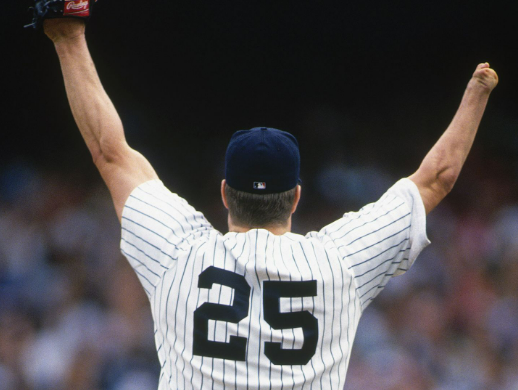
Abbott was a true trailblazer; he built himself up despite being told all his life that playing baseball was nearly impossible because he was born without a right hand. Jim Abbott had an unrelenting spirit and sheer determination. He quickly became one of the most celebrated athletes in major league history to have a disability. His crowning achievement came when he pitched a no-hitter in 1993 for the New York Yankees! He proved anything is achievable if you set your mind to it.
Curtis Pride
Born Deaf in 1968, Curtis Pride’s dreams were not silenced. Pride broke boundaries as he went on to play in the major leagues for 11 seasons. Pride was a multi-sport athlete with a heavy love for baseball. Communicating with signals allowed those who were Deaf or Hard of Hearing to hardly notice a difference. Pride’s best season was in 1996 as a member of the Detroit Tigers when he received a career high of 301 plate appearances. Pride will always be an inspiration that cannot be overlooked!
Chad Bentz
Chad Bentz was born with one hand, similar to the aforementioned Jim Abbott. Interestingly
enough, Abbott became Bentz’s mentor. A native Alaskan, Bentz also had to overcome geographical obstacles to become a major league pitcher– he’s one of three Alaskans to ever play in the big leagues. Making his MLB debut in 2004, Bentz pitched in 40 Major League Baseball games, displaying that being born with only one hand only made him stronger.Freddy Sanchez
Freddy Sanchez never thought he could do what he loved after being born with a club right foot and a left foot that was severely pigeon-toed. On only his second day of life, he already had casts on both legs, which was the first of many medical attempts to help Sanchez. “Can’t was not in our vocabulary as a family,” stated Sanchez’s mother. Sanchez went on to have a successful career in the Major League, winning a batting title in just his second season in 2006 and becoming a three-time All-Star. Freddy Sanchez was not letting anything get in his way.
Mordecai Brown
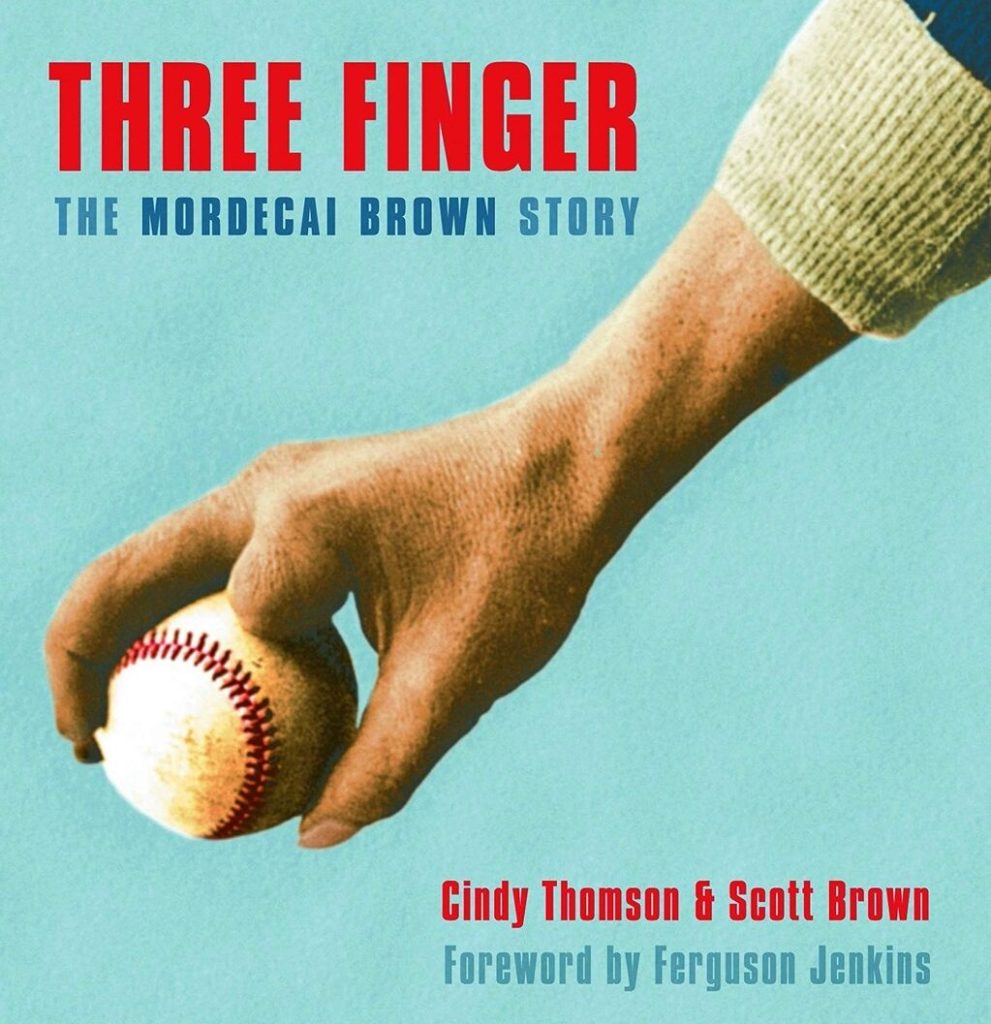
Known for his famous nickname “Three-Finger,” Mordecai Brown was the ace right-hander of the Chicago Cubs teams. His nickname was drawn from a farming accident that left him with only three fingers on one hand. This made Brown stand out because he could pitch a baseball like no one else by throwing the ball with a unique and forceful curve that no one could replicate. Brown would go on to win 239 games in the major league, forever being remembered as a force to be reckoned with.
Jim Eisenreich
Jim Eisenreich had an astonishing 15-year career in the Major Leagues. He was diagnosed with Tourette Syndrome at an early age, but he did not let that stop him from playing the sport he loved. Instead, he became an inspiration to others. Eisenreich and his wife founded the Eisenreich Foundation for Children with Tourette’s Syndrome, letting him travel the world to tell his story. His baseball career had lots of highs, such as hitting a .290 in over 1,400 games played! He continues to be an inspiration to all.
David Freese
Known for his hitting heroics in Game 6 of the 2011 World Series, David Freese was battling something no one would have known by just looking at him. The veteran infielder had depression, something he’d been living with his entire life. Freese was not one to shy away from help. He’s been very vocal about his depression, and the counseling and support he’s received from family and friends led him to profound improvements. He continued to play the sport he loved and, in 2019, had one of the best seasons of his career before retiring. David Freese is just one of many battling with mental illness and shows that it is never too late to ask for help.
These are just a handful of MLB players who have been able to do amazing things even with a disability. They’re an inspiration to everyone and show that anything is possible!
The post MLB Players With Disabilities Conquered the Big Leagues | EastersealsNJ appeared first on Easterseals New Jersey Blog.
-
10 NFL Players Who Overcame Barriers to Their Disabilities
Wednesday, February 1, 2023, 11:41 AM
From Shaquem Griffin to Tom Dempsey, the league is full of inspiring stories. With the big Super Bow…
Read this Post
From Shaquem Griffin to Tom Dempsey, the league is full of inspiring stories.
With the big Super Bowl game coming up, the spotlight is on the NFL. While we have a lot of football fans here at Easterseals NJ, we’re the biggest fans of players making a difference in the disability community. Many of these players created foundations and nonprofits to help others. Below are just a handful of current and former players that showcase that anything is possible.
Keith O’Neill
The former Colts and Cowboys linebacker has been vocal about his struggle with anxiety, depression, and bipolar disorder. O’Neill started the 4th and Forever Foundation to help others struggling with mental health.
Brandon Marshall
Marshall, a former NFL linebacker, announced he had borderline personality disorder in 2011. He’s made it his mission to spread awareness and destigmatize BPD. He even started his own nonprofit– Project 375– with the goal of “unlocking human potential through conversation, education, & inspiration.”
Shaquem Griffin
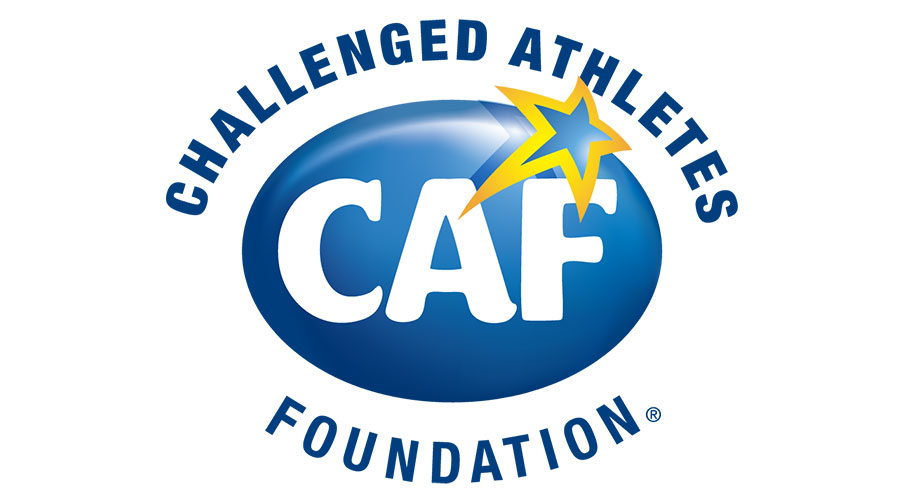
Griffin is a former NFL linebacker (and twin brother of Jacksonville Jaguars cornerback Shaquill Griffin) born with Amniotic Band Syndrome. ABS affected Griffin’s right hand, causing it to become underdeveloped. Griffin eventually underwent surgical amputation to have the hand removed. Griffin has worked with the Challenged Athletes Foundation, a sports program for those with physical disabilities.
Tom Dempsey
The late Tom Dempsey was a kicker for the New Orleans Saints. Dempsey’s kicking foot was deformed; he wore a special boot while playing. He famously made a record-setting field goal against the Detroit Lions in 1970. The kick resulted in the “Tom Dempsey Rule” which now requires all players to use shoes similar to the NFL standard. Interestingly enough, Dempsey’s custom shoe was lighter than other shoes.
Brent Boyd
Often called the father of concussion awareness, Boyd is a former NFL offensive guard for the Minnesota Vikings. He founded the advocacy group, Dignity After Football, and famously testified in front of congress regarding the NFL’s disability plan.
Rocky Bleier
Bleier was a former halfback for the Pittsburgh Steelers. He sustained severe injuries to his right foot and leg during the Vietnam War. He wrote a book about his experience, Fighting Back: The Rocky Bleier Story, discussing his injuries and his time in the NFL.
Tedy Bruschi

Bruschi, a former linebacker for the NFL and current senior advisor to the head coach at the University of Arizona, suffered a stroke in 2005. After sitting out a season to recover, he was able to continue playing for several more seasons. Shortly after his stroke, he started a non-profit organization, Tedy’s Team, to raise awareness for stroke and heart disease victims while supporting survivors.
Samari Rolle
Rolle, a former cornerback for the Oilers and Ravens, has been very open about living with epilepsy. While he eventually retired, citing his illness as well as injuries sustained on the field, he’s currently the assistant football coach at a high school in Florida.
Joe Barksdale
Barksdale is a former offensive tackle in the NFL, but his impressive resume also includes singer-songwriter and stand-up comedian. Last year, Barksdale publicly shared his autism diagnosis. He mentioned in an interview with the Today Show that the diagnosis made him feel comfortable with who he is.
Eric LeGrand
LeGrand signed a symbolic contract with the Tampa Bay Buccaneers in 2012, but he’s never played in the NFL. This college footballer fractured two of his vertebrae in a game against Army, leaving him paralyzed from the neck down. Since then, LeGrand has created a platform to speak out about those living with spinal cord injuries. He partnered with the Christopher & Dana Reeve Foundation to create the nonprofit Team LeGrand. He’s also an author, sports analyst, and motivational speaker.
Of course, these are just a handful of the many NFL players with disabilities who are making a difference in the world. Who are some of your favorite players and nonprofits?
The post 10 NFL Players Who Overcame Barriers to Their Disabilities appeared first on Easterseals New Jersey Blog.
-
Part One: Making Nature in New Jersey More Accessible
Wednesday, January 4, 2023, 9:11 AM
In this first blog of a multi-part series, we explore the importance of making sure both public and …
Read this Post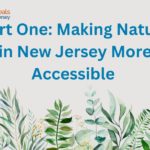
In this first blog of a multi-part series, we explore the importance of making sure both public and private natural resources are available to all who want to enjoy being outdoors in New Jersey.
While there are activities where accommodations may be impossible for some, New Jersey offers a vast array of natural experiences for all.
New Jersey is known as the Garden State but make no mistake, in addition to gardens and farms galore, NJ boasts more than 452,000 acres of natural and historic property including forests, parks, and recreation areas. Visitors are invited to take part in a variety of activities including biking, hiking, camping, boating, swimming, and picnicking.

However, for the many New Jersey residents and visitors with disabilities, the New Jersey State Park Service’s invitation to “take advantage of all our recreational, natural, and historical resources” might seem daunting. They might be “opening a doorway to adventure,” as the park’s website says, but adults and children with disabilities require certain accommodations to take it all in.
As always, Easterseals NJ has you covered. We are committed to making New Jersey accessible, and we do it in a variety of ways. This blog series will be a great resource for New Jerseyans living with disabilities who know that there is nothing they can’t do!
Check out this website: Recreation and Leisure Services for Individuals with Disabilities Resource Directory. It’s a great resource, broken down by county, offering information on outdoor recreation areas that follow ADA guidelines and offer, when appropriate, options for people with disabilities to get out there and enjoy New Jersey’s bounty of natural resources.
Why Is Accessibility to Nature Important?
The importance of physical fitness isn’t a secret. The ability to be outdoors, breathe fresh air, and enjoy the mental and emotional benefits of our beautiful surroundings knows no bounds, nor disabilities. Access to New Jersey’s natural resources is critically vital to one’s happiness and overall well-being.
That being said, for those living with disabilities, access to New Jersey’s parks and recreational areas can be discouraging. Thankfully, New Jersey (with the help of many private organizations) is committed to making nature as accessible as possible—regardless of one’s age or abilities.
More than the mental and physical benefits of enjoying our natural world, access to outdoor recreation is educationally significant. The more we are all able to explore and enjoy nature, the more we will be able to understand the world around us.

Nature is truly the world’s science lab and every single person should have access to it.
According to a great website, Nature For All (which happens to focus mostly on accessibility for individuals with low vision), “understanding nature and its importance to people and communities around the globe increases awareness of the need to conserve natural areas of our planet and work together to reduce the effects of climate change.”
What’s Next?
In our next blog in this series, we will focus on Braille Trails and Sensory Gardens—two important resources for people living with blindness and low vision to learn more about how they can experience New Jersey’s wonderful parks, trails, and gardens safely.
As always, the first step to making New Jersey more inclusive is advocacy. Easterseals NJ is committed to increasing the public’s understanding of the needs of people living with disabilities.
As they say, “the more you know.” Want to be part of the solution? Join the Easterseals NJ Advocacy effort and lend your voice to our mission. Sign up here: I want to be an advocate!
The post Part One: Making Nature in New Jersey More Accessible appeared first on Easterseals New Jersey Blog.
-
AmazonSmile: Make Purchases & Support Easterseals NJ
Monday, December 12, 2022, 12:00 PM
It’s that time of year again…time to shop ‘til you drop, find the perfect holiday presents, and cros…
Read this Post
It’s that time of year again…time to shop ‘til you drop, find the perfect holiday presents, and cross out every person on your list.
Regardless of which holiday you are celebrating, unless you started shopping months ago, you still have a long way to go to find gifts everyone will love.
We have a great way to cut down on the hassles associated with dealing with crowds at stores, and you are probably doing it already—shop online! In fact, if you are already a fan of Amazon (or are willing to take a peek) the AmazonSmile program will allow you to get great deals and support Easterseals NJ at the same time!
In other words: every time you make a purchase, a donation will be made by Amazon to Easterseals NJ! Easterseals NJ is dedicated to expanding opportunities for people living with disabilities in the Garden State. Every donation helps us support our participants in their education, careers, and access to the services they need.
What is Amazon Smile?
AmazonSmile is a way for shoppers to get the items they need at Amazon’s great prices while automatically supporting their favorite charity—Easterseals NJ! You simply visit smile.amazon.com, browse as you normally would and when you make a purchase—bam!—you are supporting a great cause.
How Does AmazonSmile Work?

It’s quite easy! Visit smile.amazon.com on your mobile device or computer and select our charity – Easterseals New Jersey – from the list of options.
That’s it! There’s nothing else to do except make your purchases as you always do. After you connect your Amazon account with Easterseals NJ as an AmazonSmile beneficiary, the charity will receive 0.5% of every purchase you make!
Important Things to Know About AmazonSmile
- You need to make your purchases through smile.amazon.com to ensure Easterseals NJ receives the donation. Create a bookmark to AmazonSmile on your device so it’s easy to find every time you want to make a purchase.
- You can use your existing account with AmazonSmile! No need to create separate accounts. And, if you set up a baby or bridal registry, or create a wish list, you can link that account to AmazonSmile as well.
- Not all products sold on Amazon are eligible for AmazonSmile charitable donations. Make sure to look for eligible products which are marked “Eligible for AmazonSmile donation” on the product detail pages.
- If you sign up for subscribe and save plans, these will not generate donations for Easterseals NJ through AmazonSmile.

AmazonSmile is a wonderful way to make sure Easterseals NJ receives the support it needs to continue its important work (and you won’t feel it in your pocketbook!) The post AmazonSmile: Make Purchases & Support Easterseals NJ appeared first on Easterseals New Jersey Blog.
- You need to make your purchases through smile.amazon.com to ensure Easterseals NJ receives the donation. Create a bookmark to AmazonSmile on your device so it’s easy to find every time you want to make a purchase.
-
Survey Shows: Americans with Disabilities are a Major Voting Block
Monday, October 24, 2022, 9:54 AMSurvey Shows: Americans with Disabilities are a Major Voting Block
Monday, October 24, 2022, 9:54 AM
There is still time to request an absentee ballot in New Jersey Do you want to vote in the 2022 midt…
Read this Post
There is still time to request an absentee ballot in New Jersey
Do you want to vote in the 2022 midterm elections but are unable to get to your assigned voting place on Nov. 8, 2022? No problem!
By November 1, 2022 you can request a mail-in paper ballot. Start by pressing this link: https://www.state.nj.us/state/elections/vote-by-mail.shtml
Be sure to follow all directions. Don’t forget to return your ballot! It must be put in a drop box, returned to your County Board of Elections or postmarked by Nov 8, 2022, for your vote to be counted.
You can also go to an in person early voting location from Oct. 26 – Nov. 6. You can find a location in your County and hours here.
Americans with Disabilities Have a Voice!

There are many realms in our society where Americans with disabilities are consistently fighting to be included and appropriately accommodated. But, when it comes to having a voice where it really counts—at the voting booths—almost 38 million adults (50 and older) with disabilities are “politically active and engaged leading into the upcoming midterm election,” according to a recent national survey conducted by Easterseals, AARP, and Pathfinder Opinion Research.
It should come as no surprise this population of voters care about issues like inflation, Social Security, and Medicare, the August 2022 survey results revealed.
“Further, this group, who relies heavily on early vote methods and other various accommodations to participate in elections, displays broad and bipartisan support for policies that make it easier to vote and are deeply concerned that politicians passing restrictive voting laws are making it more difficult for older Americans and adults with disabilities to participate electorally,” according to the report summary.
Key Points of Note:
- 9 in 10 Americans with disabilities are registered to vote.
- 89% of those registered voters say they will “definitely” or “probably” vote in the 2022 midterm elections.
- However, only 47% of voters with disabilities (and even fewer people over age 50 in the same population—39%) say they plan to vote in person at their respective polling locations on Election Day, Nov. 8, 2022.
- This population uses early voting methods because almost 50% require special accommodations. You can obtain a mail-in ballot here.
“By combining these survey results with Census estimates for this population, we can conclude that there are more than 33 million registered voters with disabilities in America, and nearly 30 million of these voters are likely to turn out in the 2022,” the report said.

Always looking to increase public awareness of the millions of people living with disabilities in the United States, Easterseals was happy to partner with Pathfinder and AARP to uncover the population’s views on this year’s elections. Easterseals maintains that it’s critically important for all Americans to understand their voting rights and to use their voice whenever possible at the polls.
Current laws diminish this voting population’s access to vote because accommodations are not mandated. As such, the survey also revealed “There is strong bipartisan support for reform that would make it easier for voters with disabilities and those 50+ to vote.”
Voters over the age of 50 with disabilities are, indeed, a major voting block in this country. The three entities summarized their efforts with this survey like this: “Together, we want to make certain people with disabilities know their voting rights, including when, where, and how to vote. The disability community is a powerful force that will not be silenced this election.”
You can view the full summary of this study here.
The post Survey Shows: Americans with Disabilities are a Major Voting Block appeared first on Easterseals New Jersey Blog.
Let's Keep in Touch
Don't miss out on exciting news, helpful resources, and impactful stories delivered to your inbox each month.
Join Today